The Universal Vampire
The Universal Vampire
Origins and Evolution of a Legend
Barbara Brodman and James E. Doan
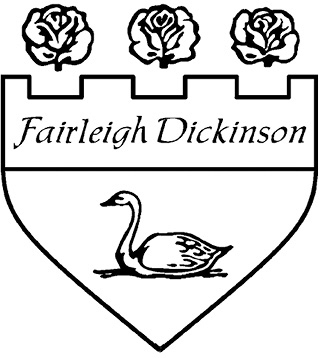
Fairleigh Dickinson University Press
Madison Teaneck
Published by Fairleigh Dickinson University Press
Co-published with The Rowman & Littlefield Publishing Group, Inc.
4501 Forbes Boulevard, Suite 200, Lanham, Maryland 20706
www.rowman.com
10 Thornbury Road, Plymouth PL6 7PP, United Kingdom
Copyright 2013 by The Rowman & Littlefield Publishing Group, Inc.
All rights reserved . No part of this book may be reproduced in any form or by any electronic or mechanical means, including information storage and retrieval systems, without written permission from the publisher, except by a reviewer who may quote passages in a review.
British Library Cataloguing in Publication Information Available
Library of Congress Cataloging-in-Publication Data
The universal vampire : origins and evolution of a legend / edited by Barbara Brodman and James E. Doan.
pages cm
Includes bibliographical references and index.
ISBN 978-1-61147-580-7 (cloth : alk. paper) ISBN 978-1-61147-581-4 (electronic) 1. Vampires. I. Brodman, Barbara.
GR830.V3U55 2013
398.21dc23 2013002327
 The paper used in this publication meets the minimum requirements of American National Standard for Information SciencesPermanence of Paper for Printed Library Materials, ANSI/NISO Z39.48-1992.
The paper used in this publication meets the minimum requirements of American National Standard for Information SciencesPermanence of Paper for Printed Library Materials, ANSI/NISO Z39.48-1992.
Printed in the United States of America
Acknowledgments
T his book is the product of a vampires-in-the-mist experience that began in July 2006, when we both presented papers at the Conference on Icons and Iconoclasts at the University of Aberdeen, Scotland. Neither paper we presented thenBrodmans on the evolution of the 17th-century Don Juan legend and Doans on Shakespeares use of history in his playsdealt specifically with the vampire. Over a few pints of stout, we began discussing parallels between Don Juan and the Byronic vampire anti-hero, which led to a paper, From the Sensual to the Damned: Legends of Don Juan and the Vampire, that we subsequently presented at the 2008 National Popular Culture & American Culture Associations Conference in San Francisco. The topic stuck and led us to develop a book project that would explore in detail the origins and evolution of the legend.
We took our proposal to the International Conference on Vampires: Myths of the Past and the Future at the University of London in November 2011, gave out calls for papers, and were overwhelmed by the quality and quantity of the essays we received. We circulated additional calls for papers with equally impressive results. And weve only just begun.
We would like to thank those friends and colleagues whose assistance made this book possible. Harry Keyishian, Director of Fairleigh Dickinson University Press, and Brooke Bascietto, Associate Editor for the Rowman & Littlefield Publishing Group, made the challenges of turning an idea into a book easy and enjoyable. Ruth Nemire set us on the right course. At Nova Southeastern University, Dean Don Rosenblum, and Director of Humanities, Marlisa Santos, gave us institutional support without which completion of this project would have been impossible. And our dear friend and colleague, Suzanne Ferriss, helped us in more ways than we can express, sharing her vast publishing experience with us unreservedly.
Barbara Brodman
James E. Doan
Introduction
Barbara Brodman and James E. Doan
F or almost 200 years , since the publication of John Polidoris The Vampyre (1819), the vampire has been a mainstay of Western culture, appearing consistently in literature, art, music (notably opera), film, television, graphic novels, and popular culture in general. Even before its entrance into the realm of arts and letters in the early 19th century, the vampire was a feared creature of Eastern European folklore and legend, rising from the grave at night to consume its living loved ones and neighbors, often converting them at the same time into fellow vampires. A major question exists within vampire scholarship: to what extent is this creature a product of European cultural forms or is the vampire indeed a universal, perhaps even archetypal, figure?
In The Universal Vampire: Origins and Evolution of a Legend , this question is discussed by tracing the development of the vampire in the West from the early Norse draugr figure to the medieval European revenant and ultimately to Dracula, who, of course, first appears as a vampire in Anglo-Irish Bram Stokers novel, Dracula , published in 1897. The Romantic vampire first coalesced around the figure of Lord Byron and his associates in the early 1800s and from there morphed into the characteristic blood-sucking ghoul of penny dreadfuls, such as the one found in James Malcolm Rymers Varney the Vampyre . What led to the continual transformations and retransformations of these figures? Did they constitute resistance to the dominant cultural norms of the time? Moreover, how did the accounts of exhumations, decapitations, and other mutilations of alleged vampires during the 18th century reflect the anxiety of Western European contact with Slavic, Turkish, and other non-Western societies? What can modern science tell about the causes of apparent vampirism as well as lycanthropy (werewolves)?
In addition to these investigations of the Western mythic, literary, and historic traditions, other essays in this volume will move outside Europe to explore vampire figures in Native American and Mesoamerican myth and ritual, as well as the existence of similar vampiric traditions in Japanese, Russian, and Latin American art, theatre, literature, film, and other cultural productions.
Part One contains four essays, which focus on the development of the Western literary tradition. In Draugula: The Draugr in Old Norse-Icelandic Saga Literature and His Relationship to the Post-Medieval Vampire Myth, Matthias Teichert explores undead creatures called draugar (singular nominative draugr ) who strongly resemble the classical vampires from later Eastern European lore. Using four Norse draugr narratives, he reconstructs the underlying myth, suggesting they formed a cohesive pattern in 13th- and 14th-century saga literature. He also speculates that there may be a distant connection between the draugr and the vampire depicted in Murnaus 1922 German Expressionist film, Nosferatu , linking both possibly to the outbreaks of plague epidemics.
Paul E. H. Daviss essay, Dracula Anticipated: The Undead in Anglo-Irish Literature, traces a different trajectory for the rise of the 19th-century literary vampire, namely the Anglo-Irish literary tradition, which includes such figures as Melmoth in Melmoth the Wanderer (1820), who sells his soul to the devil; Silas Ruthyn in Uncle Silas (1864); and Mircalla/Carmilla, the first lesbian vampire (in Carmilla , published in 1871). As Davis concludes, without these previous works Dracula would not exist in its current form.
Both Alexis Milmines Retracing the Shambling Steps of the Undead: The Blended Folklore Elements of Vampirism in Bram Stokers Dracula and Cristina Artenies Draculas Kitchen: A Glossary of Transylvanian Cuisine, Language, and Ethnography investigate the ways in which Stokers vampire differs from the traditional Eastern European ones, which were presumably his models. For example, Milmine discusses the means used to dispatch Dracula in the novel. Whereas a stake is used to kill Lucy and release her soul, the same type of weapon is not used against Dracula. Both Jonathan Harker and Quincy Morris destroy an immobilized Dracula with great knives, after which the vampires body crumbles into dust. Whereas in previous texts, such as in Carmilla , the vampire must be decapitated and then the body burned, in Stokers work the knives used to dispatch Dracula may derive from their use in various folklore traditions as safeguards against the dead rising from their grave to haunt and kill the living. Artenie, on the other hand, looks at calendrical and culinary inconsistencies in Stokers novel to suggest that he has deliberately misconstrued cultural elements to create an Other world, so that, since his time, Transylvania has been viewed as Europes heart of darkness, the land of the Undead.

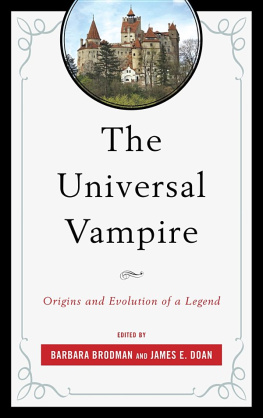

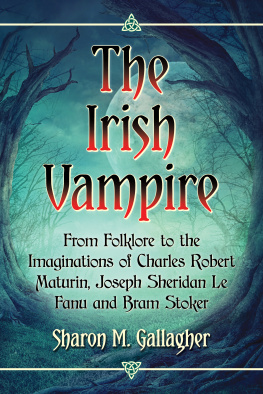
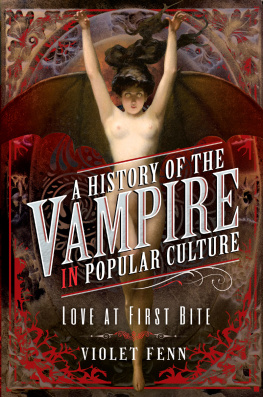
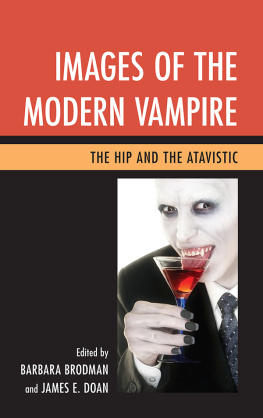
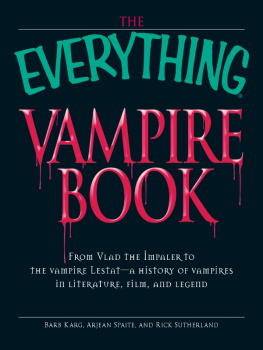
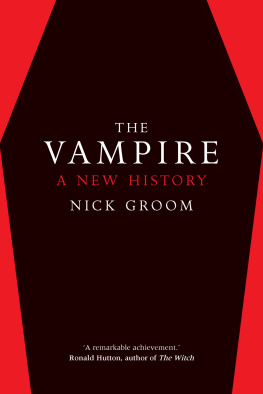
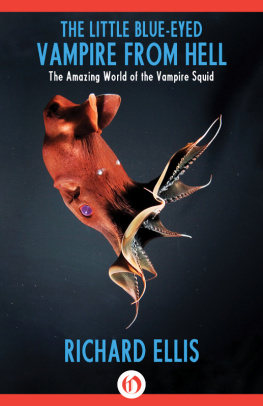
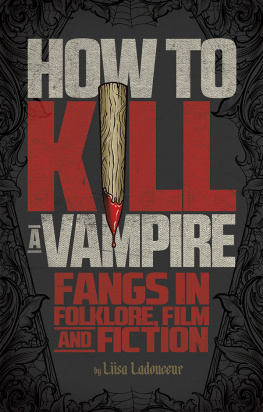
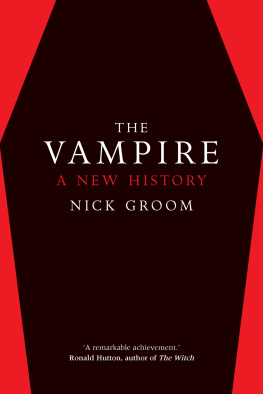
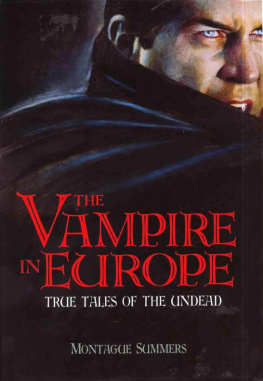
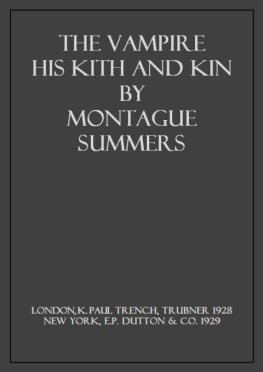
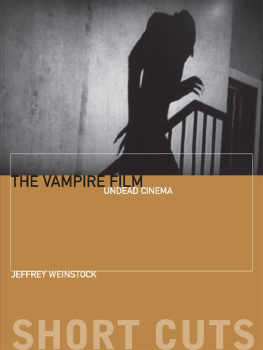

 The paper used in this publication meets the minimum requirements of American National Standard for Information SciencesPermanence of Paper for Printed Library Materials, ANSI/NISO Z39.48-1992.
The paper used in this publication meets the minimum requirements of American National Standard for Information SciencesPermanence of Paper for Printed Library Materials, ANSI/NISO Z39.48-1992.